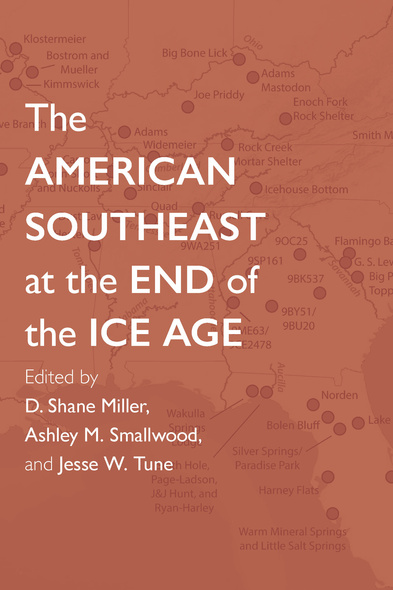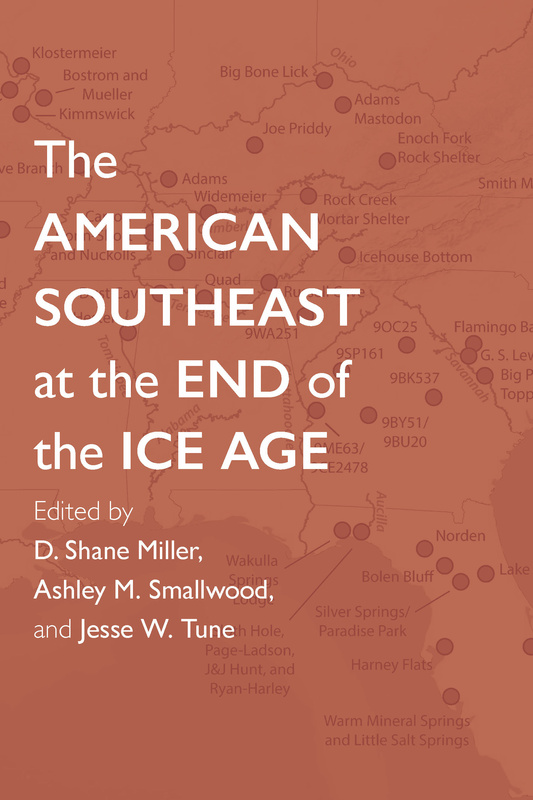
528 pages, 6 x 9
37 B&W figures - 47 maps - 29 tables
Hardcover
Release Date:30 Aug 2022
ISBN:9780817321284
The American Southeast at the End of the Ice Age
University of Alabama Press
The definitive book on what is known about the Late Pleistocene and Early Holocene archaeological record in the Southeast
The 1996 benchmark volume The Paleoindian and Early Archaic Southeast, edited by David G. Anderson and Kenneth E. Sassaman, was the first study to summarize what was known of the peoples who lived in the Southeast when ice sheets covered the northern part of the continent and mammals such as mammoths, saber-toothed cats, and ground sloths roamed the landscape.
The American Southeast at the End of the Ice Age provides an updated, definitive synthesis of current archaeological research gleaned from an array of experts in the region. It is organized in three parts: state records, the regional perspective, and reflections and future directions. Chapters survey a diversity of topics including the distribution of the earliest archaeological sites in the region, chipped-stone tool technology, the expanding role of submerged archaeology, hunter-gatherer lifeways, past climate changes and the extinction of megafauna on the transitional landscape, and evidence of demographic changes at the end of the Ice Age. Discussion of the ethical responsibilities regarding the use of private collections and the relationship of archaeologists and the avocational community, insight from outside the Southeast, and considerations for future research round out the volume.
The 1996 benchmark volume The Paleoindian and Early Archaic Southeast, edited by David G. Anderson and Kenneth E. Sassaman, was the first study to summarize what was known of the peoples who lived in the Southeast when ice sheets covered the northern part of the continent and mammals such as mammoths, saber-toothed cats, and ground sloths roamed the landscape.
The American Southeast at the End of the Ice Age provides an updated, definitive synthesis of current archaeological research gleaned from an array of experts in the region. It is organized in three parts: state records, the regional perspective, and reflections and future directions. Chapters survey a diversity of topics including the distribution of the earliest archaeological sites in the region, chipped-stone tool technology, the expanding role of submerged archaeology, hunter-gatherer lifeways, past climate changes and the extinction of megafauna on the transitional landscape, and evidence of demographic changes at the end of the Ice Age. Discussion of the ethical responsibilities regarding the use of private collections and the relationship of archaeologists and the avocational community, insight from outside the Southeast, and considerations for future research round out the volume.
The American Southeast at the End of the Ice Age features an abundance of scholars currently working on Paleoindian and Early Archaic archaeology. The range of research presented yields important new insights on the first peoples to inhabit the North American Southeast.’
—Jonathan Lothrop, curator of archaeology, New York State Museum
D. Shane Miller is associate professor of anthropology at Mississippi State University. He is author of From Colonization to Domestication: Population, Environment, and the Origins of Agriculture in Eastern North America.
Ashley M. Smallwood is associate professor of anthropology at the University of Louisville. She is coeditor of Clovis: On the Edge of a New Understanding.
Jesse W. Tune is associate professor of anthropology at Fort Lewis College.
Ashley M. Smallwood is associate professor of anthropology at the University of Louisville. She is coeditor of Clovis: On the Edge of a New Understanding.
Jesse W. Tune is associate professor of anthropology at Fort Lewis College.




